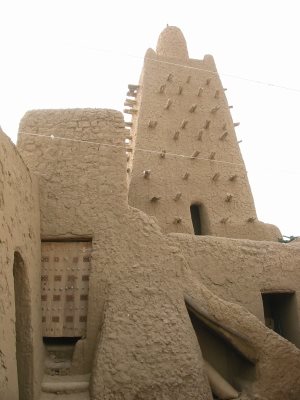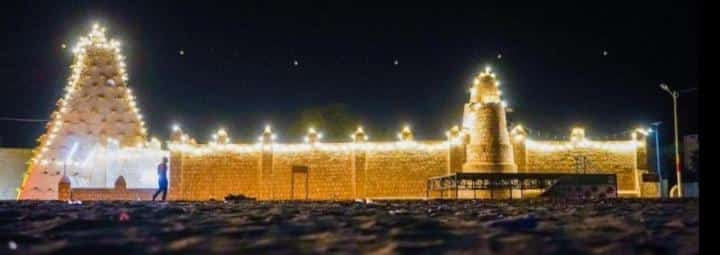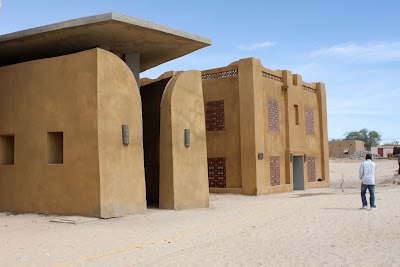Ancient Manuscripts of Timbuktu (المخطوطات القديمة في تمبكتو)
Overview
The Ancient Manuscripts of Timbuktu, nestled in the Tombouctou Region of Mali, represent a remarkable treasure trove of historical, scientific, and cultural knowledge. Dating back to the 13th century, these manuscripts are preserved in both private and institutional collections throughout Timbuktu. They provide a captivating glimpse into Africa's rich intellectual heritage and its contributions to the global tapestry of knowledge.
Timbuktu, often hailed as the 'City of 333 Saints', once thrived as a vibrant hub of trade and scholarship during the Mali Empire. This legendary city attracted scholars and students from across the Islamic world, fostering an unparalleled academic environment. The manuscripts produced here encompass a diverse array of subjects, including astronomy, medicine, mathematics, chemistry, Islamic law, and calligraphy. Written in languages such as Arabic, Fulani, Songhai, and Bambara, they reflect the multicultural essence of Timbuktu's scholarly community.
The importance of the Timbuktu manuscripts extends far beyond their educational value. They serve as a powerful testament to West Africa's intellectual achievements and its rich literary tradition, often overlooked in mainstream narratives. These documents challenge common misconceptions by showcasing the region's historical contributions to science, philosophy, and the arts. Furthermore, they illustrate the interconnectedness of ancient civilizations, as Timbuktu was a melting pot where ideas from Europe, the Middle East, and Africa converged.
Among the most notable collections is the Ahmed Baba Institute of Higher Learning and Islamic Research, which houses thousands of these invaluable documents. Named after the renowned 16th-century scholar Ahmed Baba, the institute plays a vital role in preserving and studying the manuscripts. Additionally, private libraries such as the Mamma Haidara Library and the Fondo Kati Library ensure that these cultural artifacts are protected for future generations. These libraries not only safeguard ancient wisdom but also foster a sense of community pride and ownership.
The manuscripts themselves are captivating historical artifacts. Crafted on parchment, paper, and leather, they display intricate calligraphy and ornate designs, with some illuminated by gold leaf, showcasing the artistry and craftsmanship of their scribes. The content is equally diverse and intriguing; for instance, astronomers in Timbuktu created star charts and detailed observations of celestial bodies, significantly contributing to the field of astronomy. Medical manuscripts provide insights into traditional healing practices and the understanding of various diseases, highlighting the advanced knowledge of the era.
One particularly fascinating aspect of the Timbuktu manuscripts is their resilience. In recent years, preservation efforts faced significant challenges, especially during the 2012 insurgency in Northern Mali. Many manuscripts were deliberately hidden and smuggled out of Timbuktu to protect them from destruction. The courage and dedication of local communities and scholars played a crucial role in ensuring the survival of these invaluable items during a time of turmoil.
For visitors to Timbuktu, experiencing the manuscripts firsthand is a unique and enriching opportunity. The Ahmed Baba Institute and various private libraries offer guided tours, allowing tourists to view some of these incredible texts while learning about their history and significance. Furthermore, the Institut des Hautes Études et de Recherches Islamiques-Ahmed Baba (IHERI-AB) hosts exhibitions and seminars that further illuminate the importance of Timbuktu's scholarly heritage, providing deeper insights into the manuscripts' relevance in today's world.
Visiting Timbuktu and exploring its ancient manuscripts transcends mere observation; it is an invitation to appreciate the enduring legacy of African scholarship and the universal quest for knowledge. These manuscripts exemplify how the pursuit of intellectual understanding transcends boundaries, cultures, and eras, showcasing humanity's collective endeavor to comprehend and articulate the world around us.
In conclusion, the Ancient Manuscripts of Timbuktu are not merely historical records; they are cultural treasures that resonate with the scholarly achievements of a bygone era. They symbolize the intellectual spirit of Timbuktu, a city once at the heart of African and Islamic education. For foreign tourists, a visit to Timbuktu presents an unparalleled opportunity to engage with these remarkable documents and appreciate their profound significance in global history.






